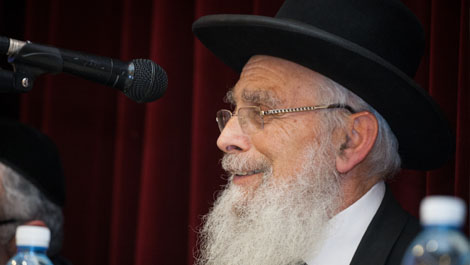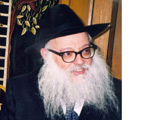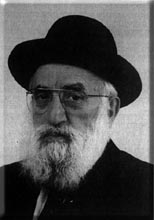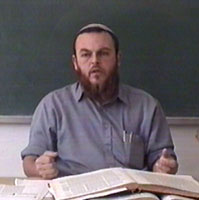Beit Midrash
- Sections
- Chemdat Yamim
- Bemare Habazak - Rabbis Questions
Answer: We have writing several times that the main issue with the position of tefillin shel rosh is their likelihood to be too far down. But the lateral position also deserves a look. [This week we will focus on classical sources and basic possibilities; next week, we will get into details and practicality.]

Bemare Habazak - Rabbis Questions (627)
Rabbi Daniel Mann
301 - Ask the Rabbi: Beracha when Lighting for a Neighbor
302 - Ask the Rabbi: Transporting Children before or after Shacharit?
303 - Ask the Rabbi: Forgot to Remove Tefillin Before Musaf of Rosh Chodesh
Load More
The requirement of the middle of the head is actually not obvious. While the Torah writes of tefillin "between the eyes," the gemara (Menachot 37b) derives that this refers to the top of the head, based on a gezeira shava from the prohibition of a mourner pulling out hair. Tosafot (Kiddushin 36a) asks that accordingly we would expect that tefillin shel rosh would be in the same area – the entire part of the head in which hair grows (Shulchan Aruch, Yoreh Deah 180:9). Yet, they and the Rambam (ibid.) posit that a vestige of the literal idea of "between the eyes" limits the area, with the Rambam reasoning that the middle is above the area of "between the eyes."
The gemara describes the location of the shel yad and the front-back location of the shel rosh, not its lateral position, so what is the Rambam’s source? The Beit Yosef (OC 27) cites the gemara (Menachot 35b), which says that the back knot "faces the face." Rashi explains: "opposite the oref (posterior neck) and not the side of the head." The Beit Yosef surmises that this is the Rambam’s source: just as the knot is in the middle of the back of the head, so too the bayit should be in the middle. He adds in that this is anyway apparent from "between the eyes," which the Rambam mentions (although he does not usually independently derive halachot from p’sukim).
What does in the middle mean? First, the middle of the head can refer to a line precisely in the middle, but the entire tefillin, which has width, cannot fit on a line! One logical possibility is that it suffices that any part of the bayit is on the line, giving us significant leeway, especially if we have big tefillin. Or it can mean that the middle of the tefillin must be in the middle of the head. But does that mean that the precise middle has to be on the precise middle?! As the Satmar Rebbe points out (Divrei Yoel I:4), we accept the opinion that man is incapable of being precise (see Gittin 78a), even with mirrors, not to mention that tefillin move slightly when we move our head. One possibility is raised by the Shulchan Aruch Harav (addendums to Hilchot Tefillin) based on an inference of a different gemara: two of the four parshiyot must be right of center and two left of center. This requires near perfection (in addition to the fact that the chambers for the parshiyot are not necessarily equidistant – see Mishna Berura 32:182), and it is shocking that earlier sources would not warn us!!
Another approach, which seems to be posited by most of the poskim, is that the middle is an area of the head (similar to the front-back and arm areas) within which the entire tefillin must be resting. It follows that if the tefillin’s edges are within this area, in makes no difference, other than zeh keili v’anveihu (doing mitzvot aesthetically) whether it is centered. The question then begs – how wide is this area? What are its borders? If we know the answer, each person will have to compare that area to the width of his tefillin and determine his leeway (accordingly, the smaller the tefillin, the better).

Ask the Rabbi: Shehecheyanu on a New Shofar for Rosh
Rabbi Daniel Mann | Elul 5785

Ask the Rabbi: Ice Cream on Hot Cake on Shabbat
Rabbi Daniel Mann | Iyar 5785

Ask the Rabbi: Watching a Bar Mitzva Videoed on Shabbat
Rabbi Daniel Mann | Adar 5785

Ask the Rabbi: Finishing to Eat but Continuing to Drink
Rabbi Daniel Mann | Iyar 5785

Rabbi Daniel Mann

Reciting Kri’at Shema at the Very End of its Time
Sivan 21 5779

Washing Hands with Soap on Yom Kippur
Tishrei 4 5776

Bikur Cholim by Electronic Means
Shvat 1 5782
























